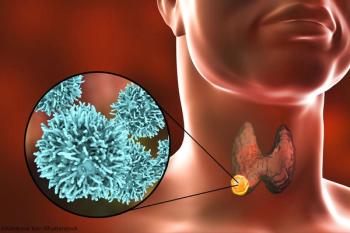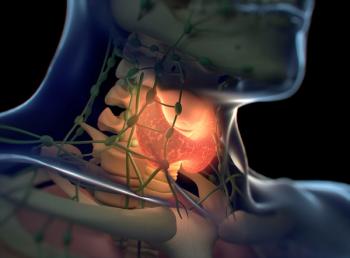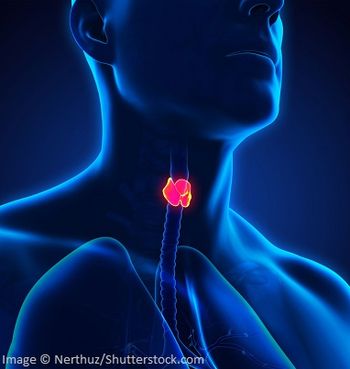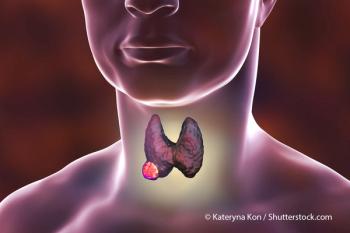
USPSTF Recommends Against Screening for Thyroid Cancer in Asymptomatic Adults
The US Preventive Services Task Force recently issued an updated statement recommending against screening for thyroid cancer in asymptomatic adults.
The US Preventive Services Task Force (USPSTF) recently issued an updated statement recommending against screening for thyroid cancer in asymptomatic adults, concluding that “screening for thyroid cancer in asymptomatic persons results in harms that outweigh benefits.”
“The USPSTF found inadequate direct evidence to assess the harms of screening for thyroid cancer in asymptomatic persons,” the statement read. “The USPSTF found adequate evidence to bound the magnitude of the overall harms of screening and treatment as at least moderate, based on adequate evidence of serious harms of treatment of thyroid cancer and evidence that overdiagnosis and overtreatment are likely consequences of screening.”
This update to the 1996 USPSTF recommendation was
Data show that the incidence of detected thyroid cancers has been increasing in the United States from a rate of 4.9 cases per 100,000 persons in 1975 to 14.3 cases per 100,000 persons in 2014. Screening to detect thyroid cancer has the potential to detect malignant nodules earlier, making treatment more effective, but it could also result in overdiagnosis and overtreatment.
The USPSTF based its recommendation on a systematic review that evaluated the benefits and harms associated with thyroid cancer screening and treatment of early thyroid cancer in asymptomatic adults. The review included relevant studies published from 1966 to 2016. In all, 67 studies were included in the review.
The review found that no fair- to good-quality studies directly evaluated the benefit of thyroid cancer screening.
In two studies, including 354 people, the use of neck palpation was not sensitive enough to detect thyroid nodules, and two methodologically limited studies conducted in South Korea, including 243 people, showed that a combination of selected high-risk sonographic features was specific for thyroid malignancy. Although three studies included addressed harms from screening or ultrasound-guided fine-needle aspiration, none directly assessed the risk for overdiagnosis.
The review identified harms associated with screening and treatment: based on 36 of the 67 studies, including more than 40,000 patients, the 95% CI for the rate of surgical harm was 2.12 to 5.93 for cases of permanent hypoparathyroidism per 100 thyroidectomies, and 0.99 to 2.13 for cases of recurrent laryngeal nerve palsy per 100 operations. Based on 16 studies, including almost 300,000 patients, treatment of differentiated thyroid cancer with radioactive iodine was associated with a small increase in risk of second primary malignancy and with increased risk of permanent adverse effects on the salivary gland.
In an
In addition, Cappola wrote that more needs to be done to reduce the current number of deaths from thyroid cancer.
“What the field needs to prevent a similar evaluation and recommendation in the next USPSTF assessment is a noninvasive measure, either radiographic or by biomarker, to distinguish between nodules that have thyroid cells that will leave the capsule and cause morbidity and those nodules that do not,” she wrote. “Using the same tools-palpation, ultrasound imaging, and findings on microscopic examination-is unlikely to result in a different conclusion about screening for thyroid cancer in the future. New technologies are required.”
Newsletter
Stay up to date on recent advances in the multidisciplinary approach to cancer.


















































































